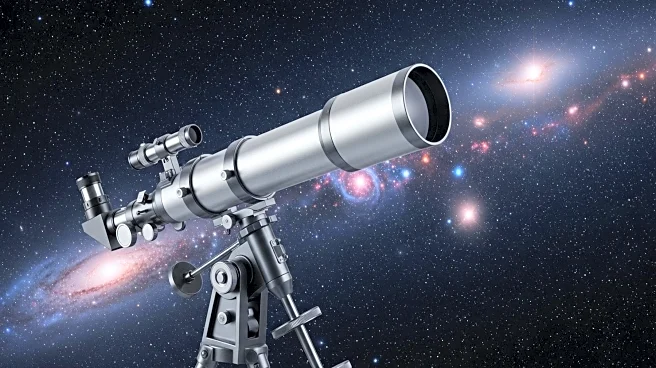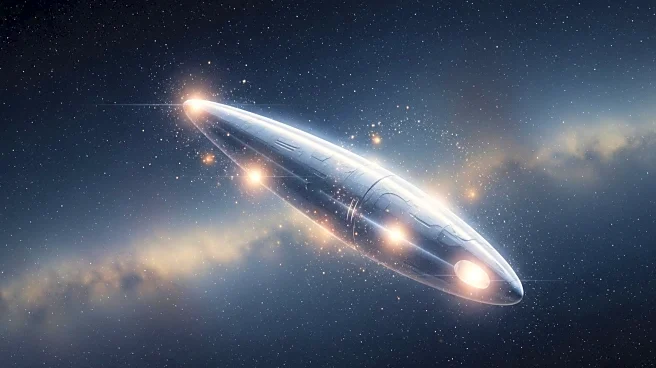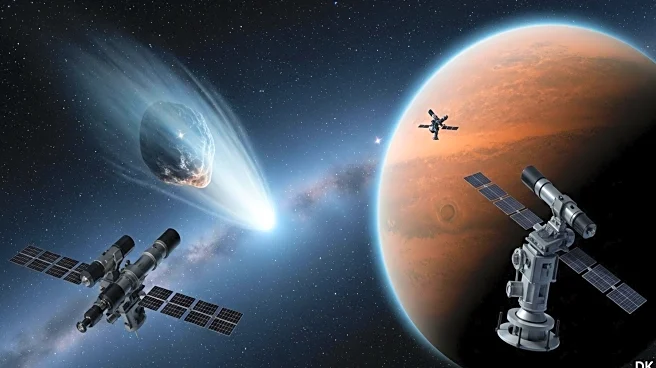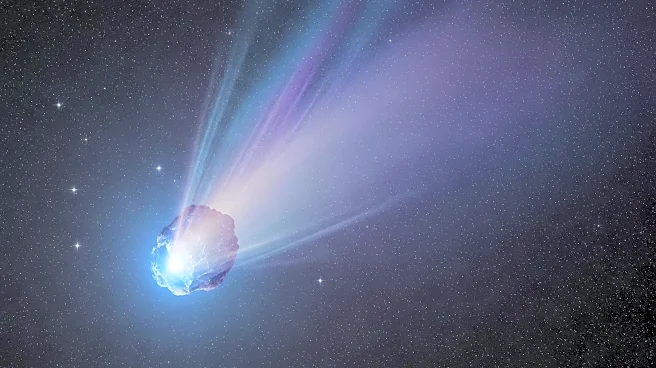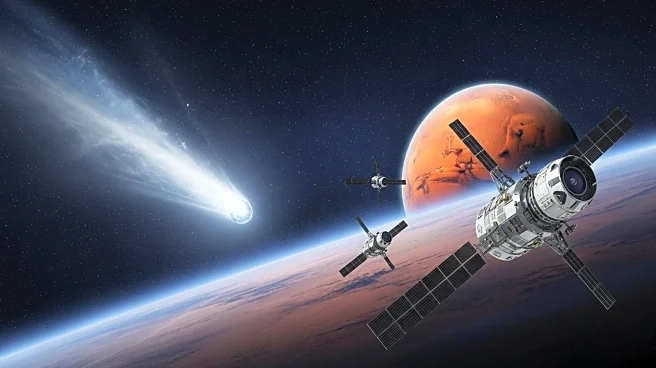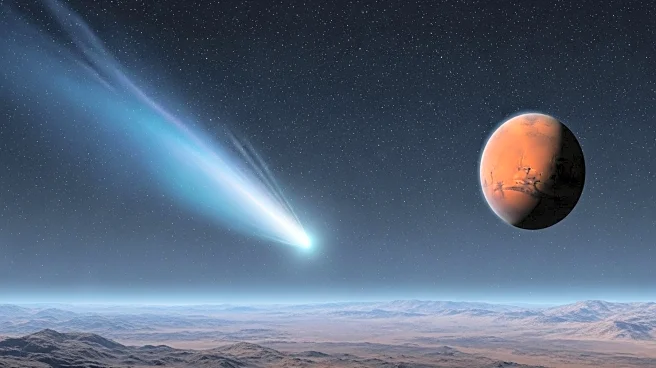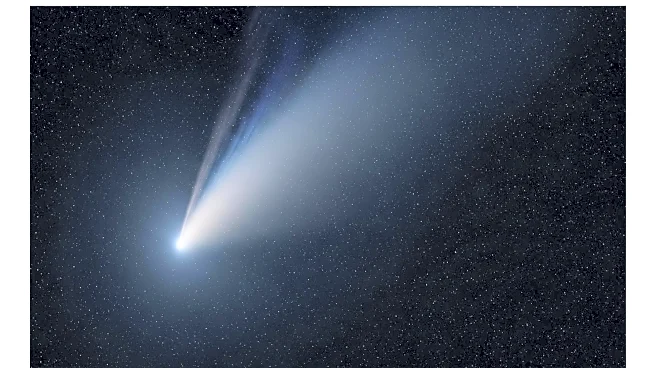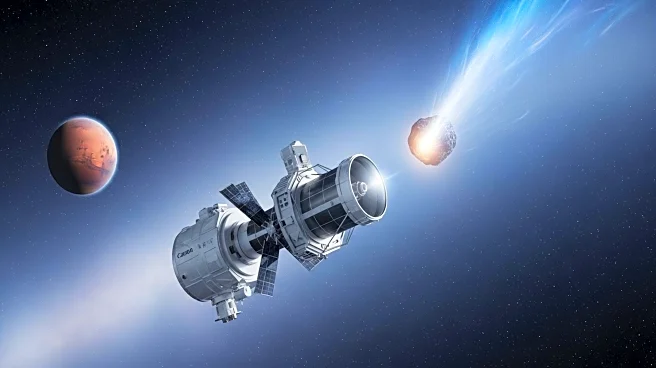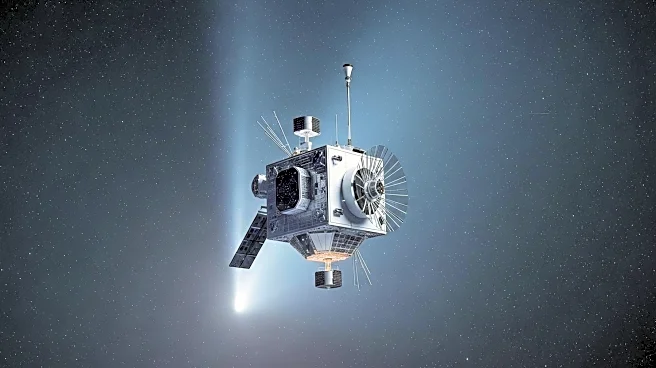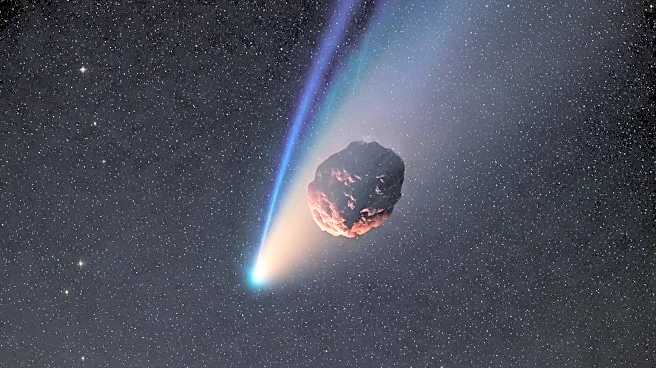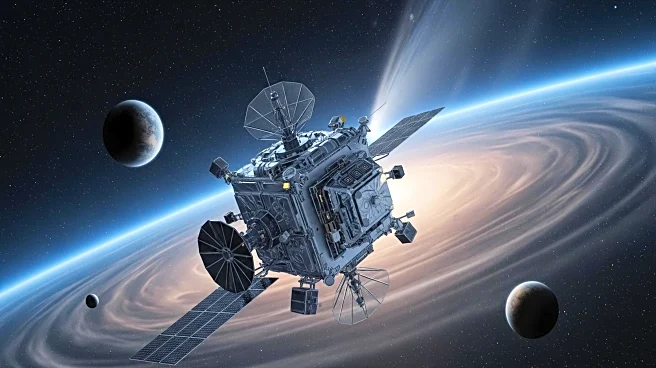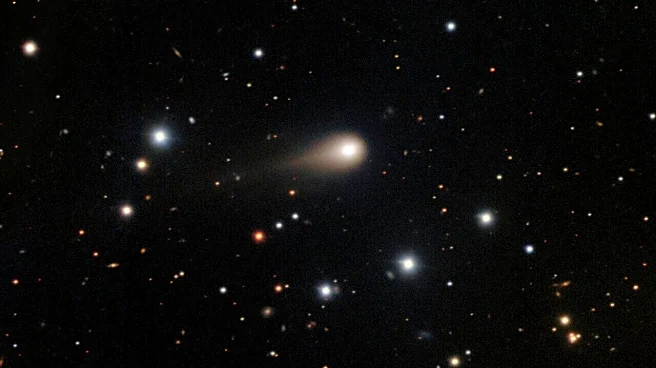What is the story about?
What's Happening?
NASA has confirmed that the interstellar comet 3I/ATLAS, discovered by the ATLAS telescope in Chile, poses no threat to Earth. The comet, moving at a record speed of 130,500 mph, was first observed on July 1, 2025. Despite online rumors suggesting it could be alien technology or a potential threat, NASA and the European Space Agency (ESA) have clarified that the comet's trajectory does not bring it close to Earth or any other planet. The closest approach to Earth occurred on July 21, when it was 270 million kilometers away, far beyond any danger zone. The comet is expected to reach its closest point to the Sun, known as perihelion, on October 30, 2025.
Why It's Important?
The confirmation that 3I/ATLAS poses no threat is significant as it dispels widespread panic fueled by social media speculation. The comet offers scientists a rare opportunity to study an interstellar object, only the third of its kind observed. Understanding its composition and behavior could provide insights into the formation of planetary systems and the chemical connections between different star systems. This scientific opportunity is crucial for advancing knowledge about the universe and potentially discovering similarities between our solar system and others.
What's Next?
As 3I/ATLAS approaches perihelion, ESA and NASA plan to continue observations using spacecraft already in the solar system. ESA's Mars orbiters and NASA's Psyche mission will collect data as the comet nears Mars. ESA's JUICE mission will observe the comet post-perihelion, focusing on the transformation of its ice into gas and dust. These observations will help determine the comet's chemical makeup, offering a chance to compare it with comets from our solar system and potentially revealing unique interstellar chemistry.
Beyond the Headlines
The study of 3I/ATLAS could have long-term implications for understanding the building blocks of star systems across the galaxy. If the comet's composition is similar to those formed in our solar system, it may suggest a universal chemical foundation for planetary formation. Conversely, differences could indicate unique interstellar processes. This research could reshape our understanding of cosmic chemistry and the potential for life beyond Earth.
AI Generated Content
Do you find this article useful?
